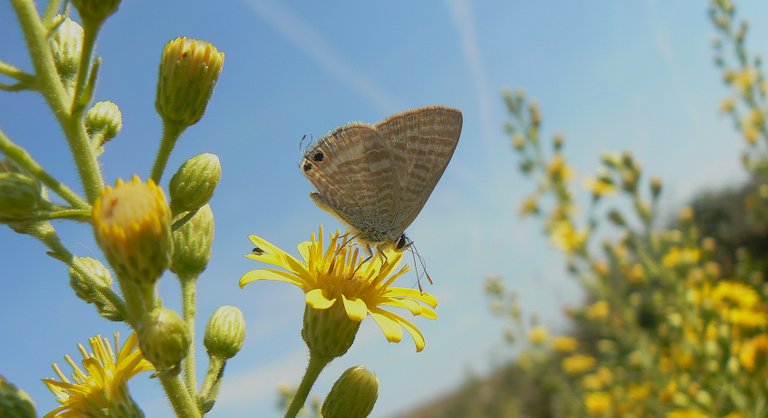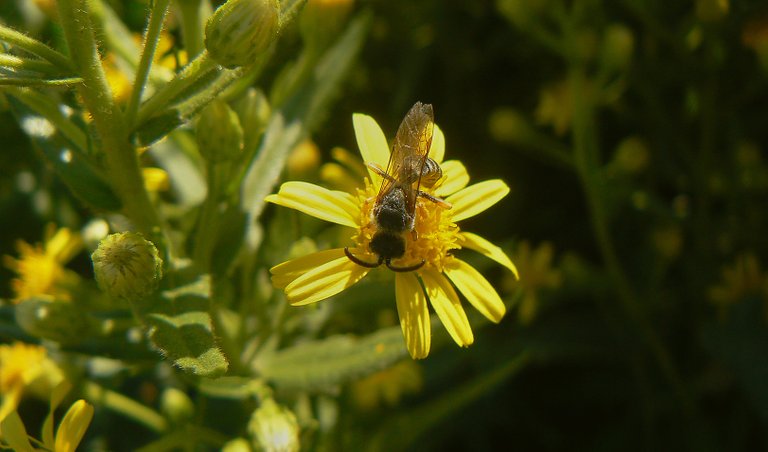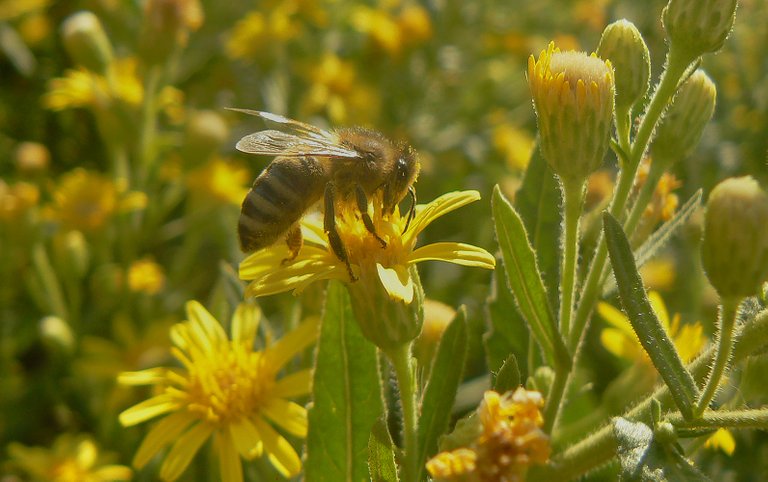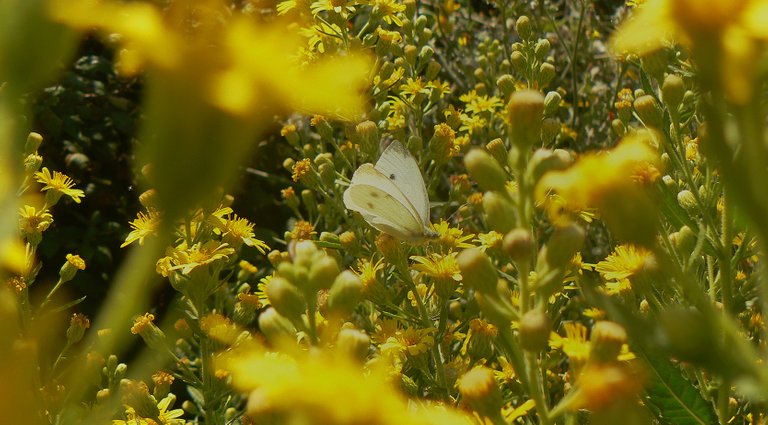After being uniformly green for the rest of the year, the large coastal areas covered with Dittrichia viscosa at the end of the summer get decorated with a multitude of vivid yellow flowers produced by that resilient plant.

The abundance of nectar attracts many insects and everything looks like the second coming of spring.
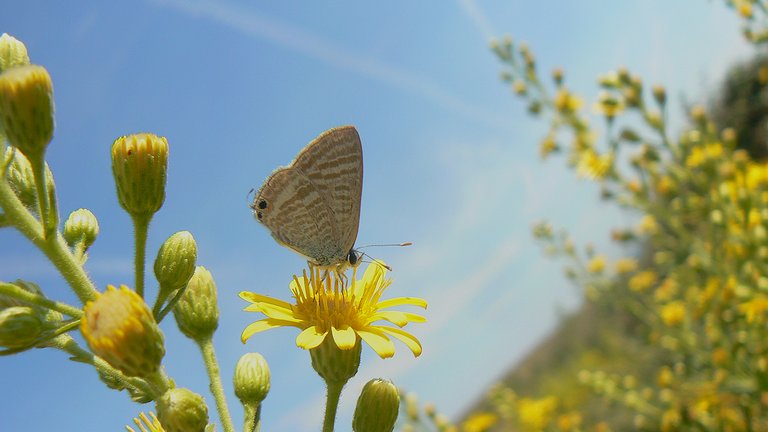
This post tells a short visual story about the seasonal exuberance in the coastal fields and meadows at the end of the summer.
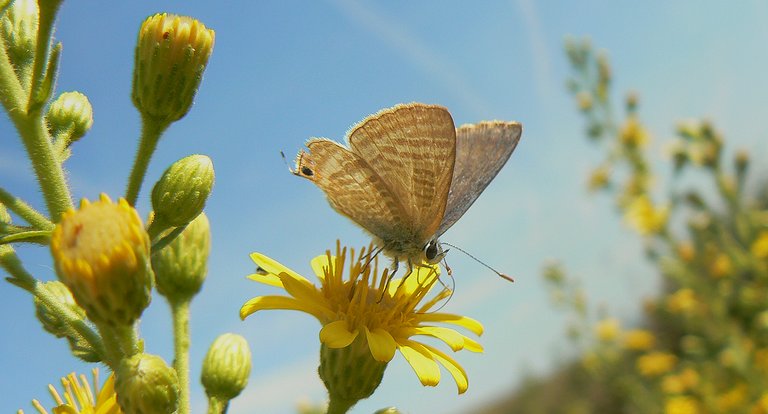
The small butterfly in the opening series of photographs is the Lampides boeticus from the Lycaenidae family ...
... commonly known as the long-tailed blue. The larvae feed on flowers, seeds, and pods of many plants from the Fabaceae family. The adults consume the nectar from a wide variety of flowers that can be found in their habitats.
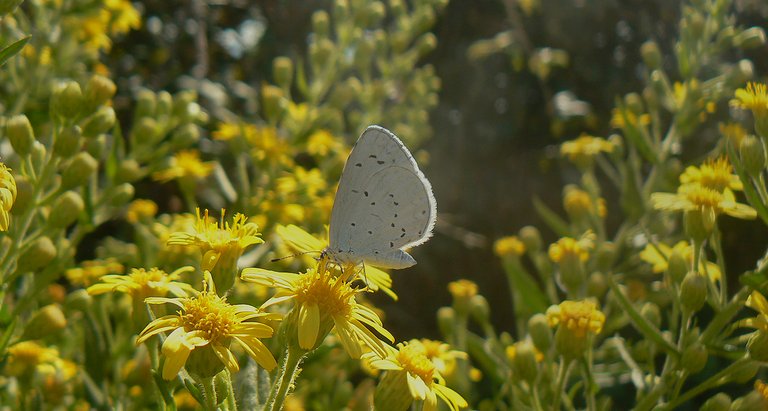
Celastrina argiolus is another small butterfly from the Lycaenidae family that can be seen feeding on these yellow flowers.
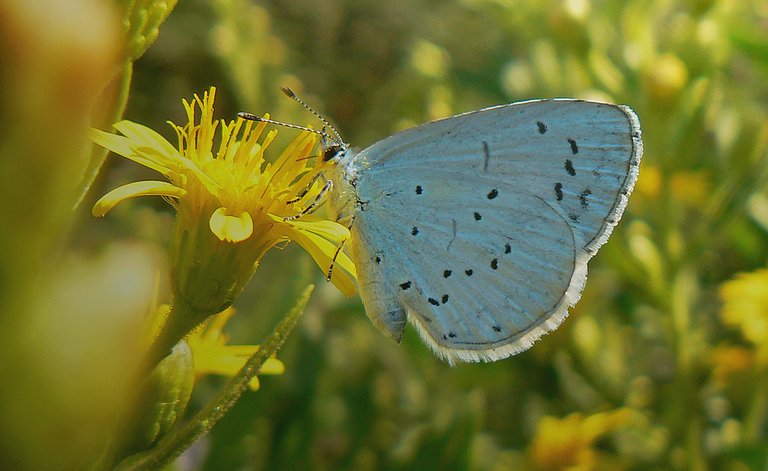
The caterpillars feed mainly on the flower buds of Ilex aquifolium and Hedera helix.
Adults feed on nectar, tree sap, and juices from rotting fruits.
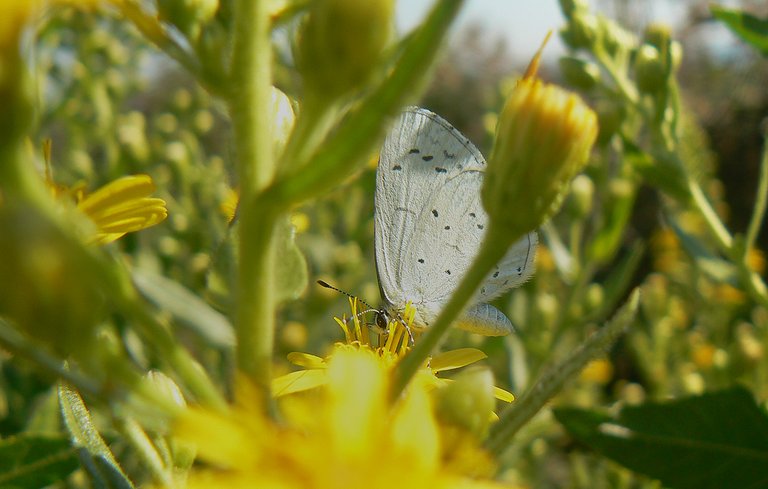
Here you can see the first shot that I took on this occasion. The butterfly was still partially hidden by the dense growth of flowers.
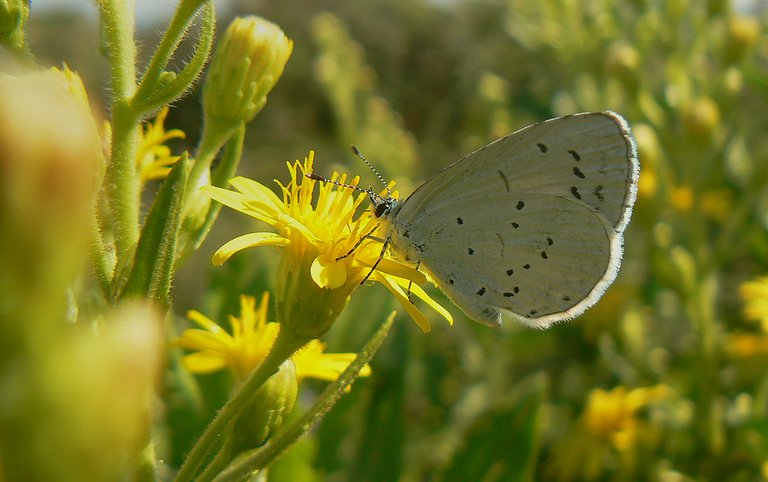
Celastrina argiolus is widespread and common in various habitats throughout Europe. Today, while searching for information to include in the post, I found out that this species is considered the national butterfly of Finland. Whatever that means. It seems that was voted for that title by people in Finland.
The flowers attract some bees too.
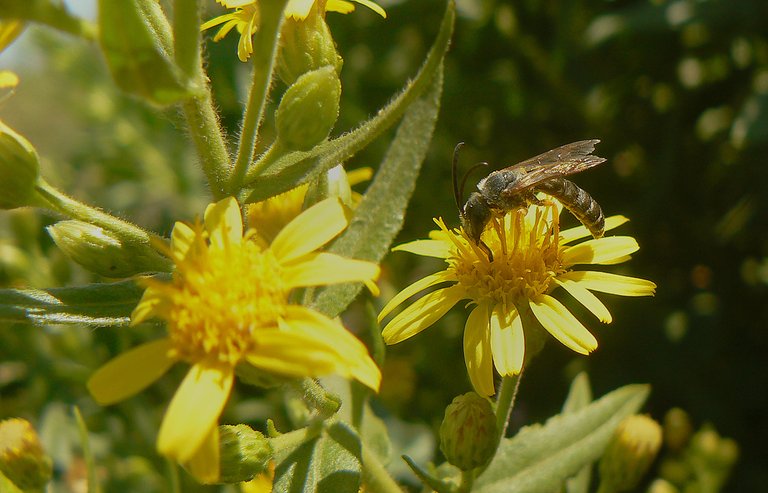
This is the Halictus scabiosae. These bees from the Halictidae family nest in vertical tunnels excavated by females. Usually, each female builds her own tunnel. But sometimes they form fairly large colonies with a relatively loose hierarchy in which smaller females can act as workers.
Here you can see the European honey bee (Apis mellifera). These bees live in highly organized colonies.
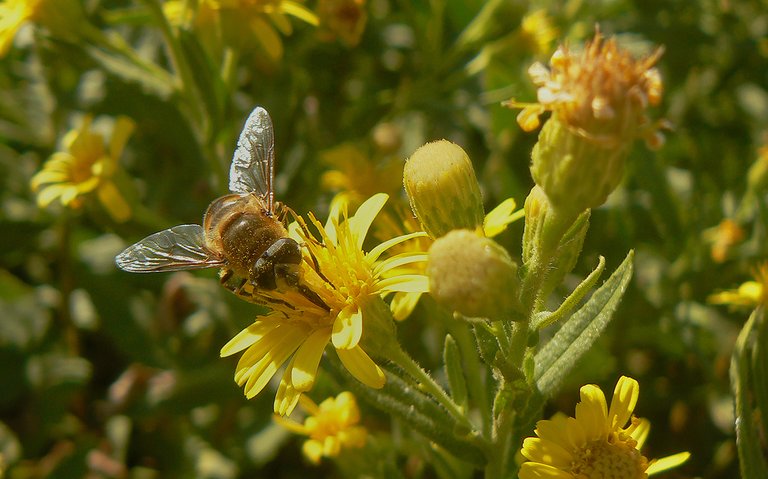
The fly in this photograph feeds on nectar and mimics a bee. This is the Eristalis tenax, a species from the Syrphidae family. In the upper left corner of the following photograph ...
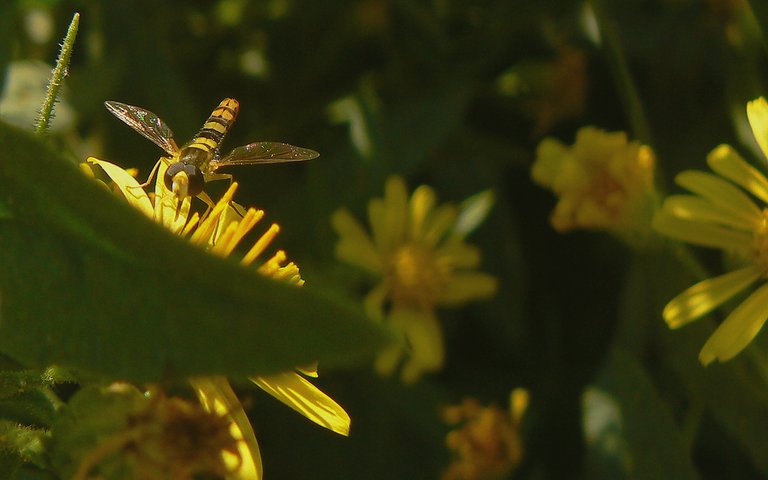
... you can see another species from the same family. This is the Sphaerophoria scripta.
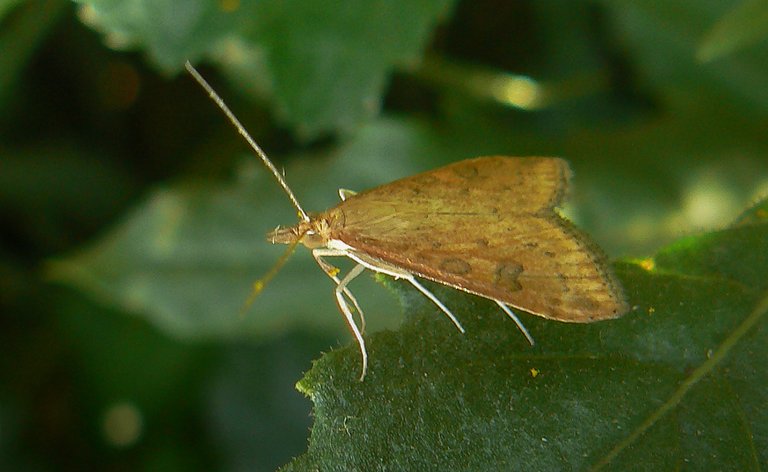
This small moth was photographed in the shade, among the lower leaves of the plant. Udea ferrugalis is the name of the species. The family is Crambidae.
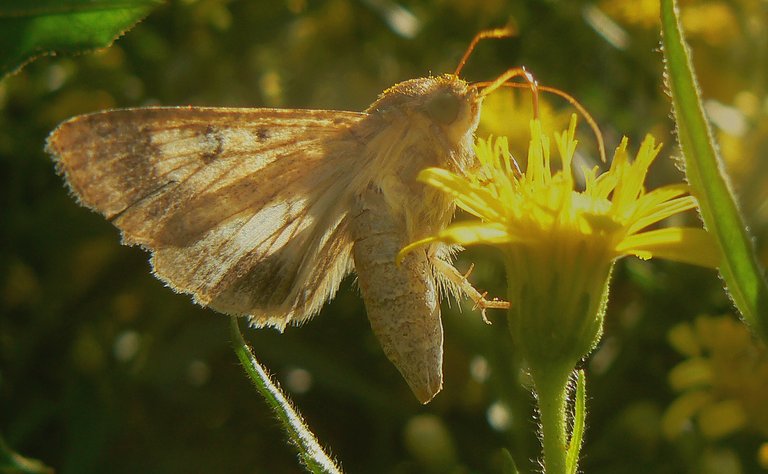
The moth in this photograph is enjoying the nectar. Can't tell you the name of the species, but the family is definitively Noctuidae.
Here you can see the very common cabbage white butterfly. (Pieris rapae). With plenty of cabbages and broccoli in the nearby fields, the larvae have more than enough food to grow and turn into lovely butterflies. In the following photograph ...
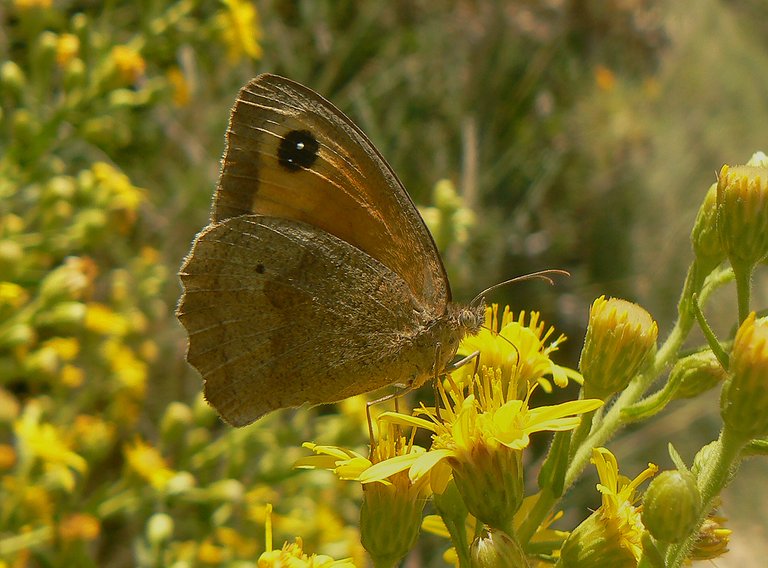
... you can see another butterfly that landed on the flowers to get some nectar.
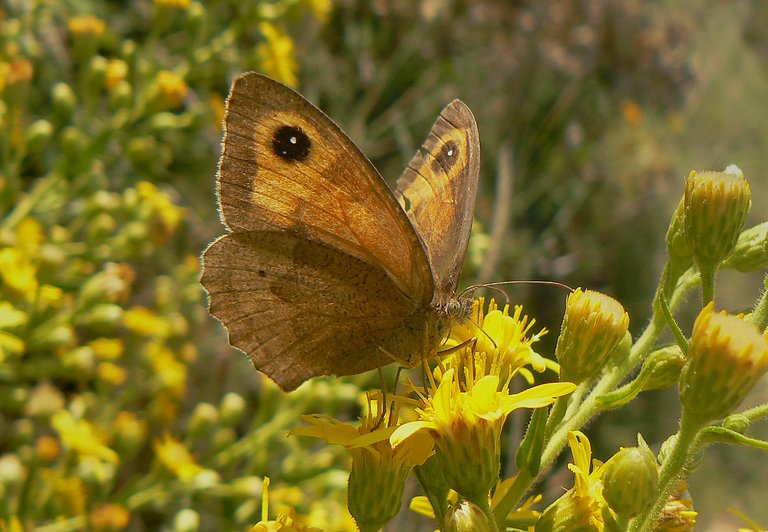
This is the Maniola jurtina, commonly known as the meadow brown.
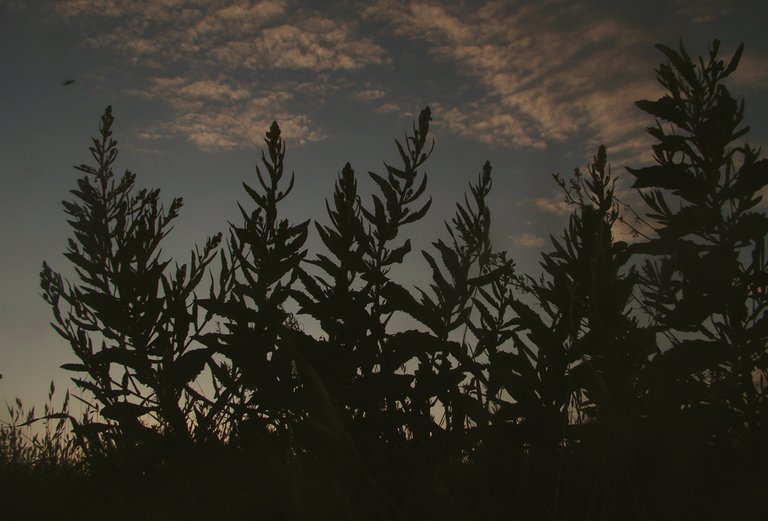
In this last photograph, you can see the silhouettes of Dittrichia viscosa at the end of the day.
The photographs weren't taken these days, at the end of this summer. Nope. These are old shots from 2016. I had only a small, not very good compact camera with me. And I didn't use the macro equipment here, because six years ago, I didn't have any.
The following links will take you to the sites with more information about some of the protagonists of this post. I found some stuff about them there.
https://en.wikipedia.org/wiki/Dittrichia_viscosa
https://en.wikipedia.org/wiki/Pieris_rapae
https://en.wikipedia.org/wiki/Lampides_boeticus
https://en.wikipedia.org/wiki/Holly_blue
https://www.buzzaboutbees.net/great-banded-furrow-bee-halictus-scabiosae.html
https://www.leps.it/
AND THAT'S IT. AS ALWAYS IN THESE POSTS ON HIVE, THE PHOTOGRAPHS ARE MY WORK - THE END.
